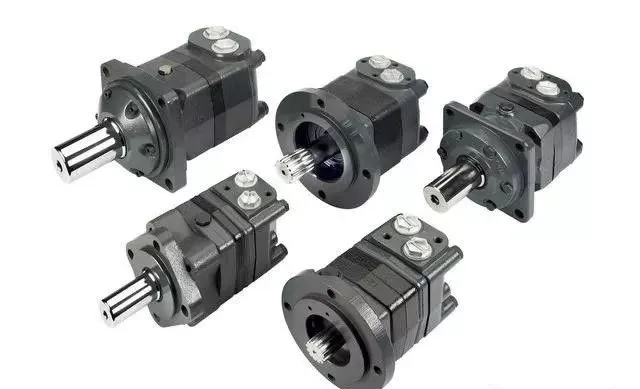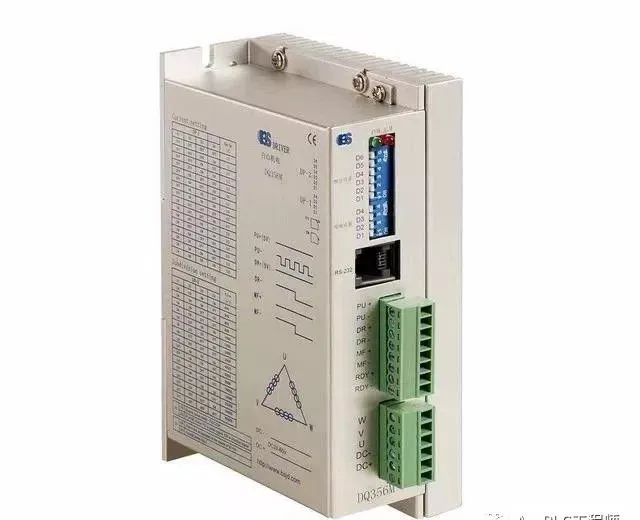If you want to make the stepper motor rotate, you must understand its subdivision
Step angle of stepper motor
To understand the " segmentation " of stepper motor drivers , we must first understand the concept of " step angle " of stepper motors !
The step angle is the mechanical angle that the rotor rotates for one pulse signal without a reduction gear.
The step angle of the motor indicates the angle that the motor rotates each time the control system sends a pulse signal. In other words, the angle that the rotor rotates each time a pulse electrical signal is input is called the step angle. It can also be described as follows: each time the stator control winding changes the power supply mode, it is called a beat. The mechanical angle that the rotor rotates in each beat is called the step angle, usually represented by θs. Common ones are 3°/1.5°, 1.5°/0.75°, and 3.6°/1.8°. For example, for a stepper motor (small motor) with a step angle of 1.8 degrees, the number of pulses used for one turn is n=360/1.8=200 pulses.
The error of the step angle will not accumulate over a long period of time and only corresponds to the number of input pulse signals. It can form an open-loop control system with a relatively simple structure and a certain degree of accuracy, or it can form a closed-loop system when higher accuracy is required.

Let's take an example to explain the step angle so that you can understand this concept more clearly:
If the value given by the motor is 7.5°/15° (indicating 7.5° for half-step operation and 15° for full-step operation), this step angle can be called the "motor's inherent step angle". It is not necessarily the true step angle when the motor is actually working. The true step angle is related to the driver.
Stepper Motor Driver Segmentation

Simply put, the subdivision number refers to the actual step angle of the motor when it is running, which is a fraction of the inherent step angle (full step). From the table below, we can see that when the driver works in the 10-subdivision state, its step angle is only one-tenth of the "motor inherent step angle", that is, when the driver works in the full-step state without subdivision, the control system sends a step pulse, and the motor rotates 1.8°; and when the subdivision driver works in the 10-subdivision state, the motor only rotates 0.18°. This is the basic concept of subdivision. [Do you understand? You can think about it again and again]
The operating beats are a more accurate way to describe the subdivision characteristics of the driver. The operating beats refer to the number of pulses required for each tooth pitch of the stepper motor when it is running. A motor has 50 teeth. If the operating beats are set to 160, then the stepper motor needs a total of 50×160=8000 steps for one rotation; the corresponding step angle is 360°÷8000=0.045°. Please note that if the operating beats are set to 30, the subdivision number is 7.5 according to the corresponding relationship in the table above, which is not an integer.
The subdivision function is completely generated by the driver through precise control of the motor's phase current and has nothing to do with the motor.
The main advantages of stepper motor driver segmentation
1. Completely eliminate the low-frequency oscillation of the motor
Low-frequency oscillation is an inherent characteristic of stepper motors (especially reactive motors), and subdivision is the only way to eliminate it. If the stepper motor sometimes has to work in the resonance zone (such as moving in an arc), choosing a subdivision drive is the only option.
2. Improved the output torque of the motor
Especially for three-phase reaction motors, the torque is increased by about 30-40% compared with non-subdivision.
3. Improved the resolution of the motor
Since the step angle is reduced and the uniformity of the step is improved, 'improving the resolution of the motor' is self-evident.
The above advantages, especially the advantages in performance, are not a quantitative change, but a qualitative leap. According to records, most users who originally used non-subdivision drivers changed to subdivision drivers after comparison. Therefore, it is recommended to use subdivision drivers.



























 XINDA
XINDA